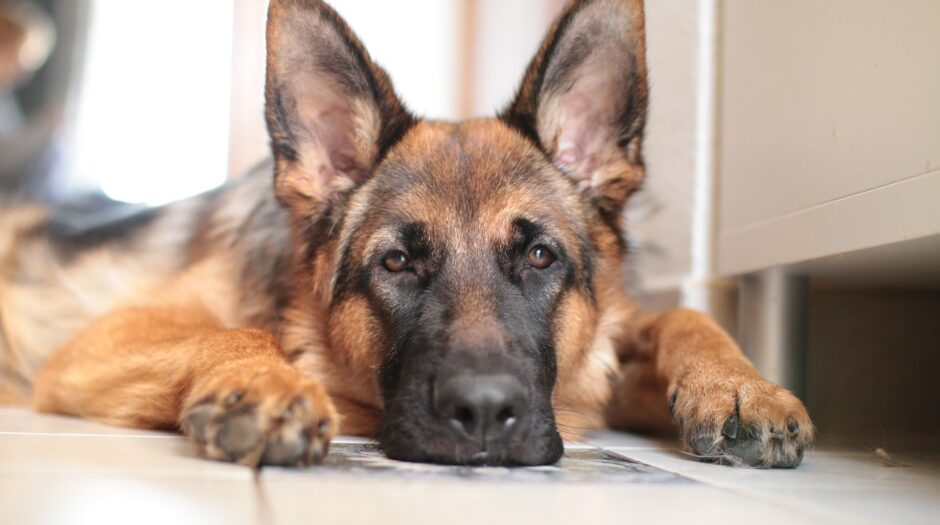How To Help Your Pet Cope With Back To School Season!
With September, comes back to school season for those with kids in the family. During this time, it’s important to consider how this new routine will affect your pet and how you can improve both yours and your pets experience.

How Does Back To School Effect Your Pet?
After a whole summer break with your kids around the house, a sudden change in routine can become stressful for your pet. After all, your pet got used to the constant human companionship so when you suddenly leave them home alone, they are bound to get upset and/or anxious.
Dogs are particularly prone to develop separation anxiety during this time. Dogs who suffer from this may begin doing behaviours such as howling and whining when you are away, digging and scratching (in attempt to escape), destroying furniture/other items by chewing, and overall change their mood. A major change in your family routine, for example back to school, can be a potential trigger for separation anxiety.

Cats can also experience separation anxiety, however, they are less prone to it. At-risk cats who have experienced things like being passed between multiple owners, trauma/abuse or abandonment are especially prone to this. The symptoms look a little different in cats which can include; withdrawing, hiding, escaping, trembling, a loss of appetite, change in mood, and/or an upset stomach (resulting in diarrhea)
So What Can You Do To Help? | Tips
1. Set A New Schedule (preferably including the kids)
Dogs are known to be creatures of habit and an orderly routine lets your dog to know what to expect each day and when to expect it. This gives them a sense of structure, happiness, and confidence. A great thing you can do is set a new routine according to your new schedule and ease them into it. The ASPCA recommends that you begin with short absences to get your pet comfortable with the idea of you leaving, and then gradually lengthen these absences during the weeks leading up to the new schedule.
For many people, school may have already started. But don’t worry! It’s never too late to start. You should be making two main routines; a morning one and an evening one. This should include things like feeding, walks, and play time roughly around the same time every day.
2. Introduce New Activities For When Everyone Is Gone
Without any people in the house your pets can easily get bored. You can try to curb their boredom through things like enrichment toys, puzzles, and games. Try to think of fun things for them to do around the house; rotate through a selection of safe toys to leave around, fill toys will desirable treats and hide some of them around the house for them to find, set out some puzzles, etc.
3. Try Putting On Background Noise
A house that is completely silent can feel strange to a dog who is used to people being around all of the time. Consider turning on the TV, radio, or some calm music. These noises can be soothing to your pet.
4. Enrol the into a Doggy Daycare
If your dog loves to socialize, consider enrolling them into a daycare! They are great places for your dog to have fun, make new friends and release energy 1-2 times a week.
5. Hire A Dog Walker
A dog walker is a great idea for less social dogs and/or seniors. Its a good way to let your pet get their energy out and prevents them from being cooped up in the house all day. Plus, they can give your pet that one-on-one attention and extra playtime.
6. Stay Calm When Leaving The House
A lot of pets, especially dogs, can pick up on emotional cues from their owners. Therefore, its important that you try to stay calm and not make a big deal about leaving.
That being said, you shouldn’t just completely ignore your dog. Study’s have shown that petting has positive results in pets with separation anxiety. The results demonstrated that dogs showed more calm behaviours during the separation and their heart rate was lower after being pet for one minute before the person left.
It’s a debated idea, however we recommend that you create some sort of leaving the house routine so that your dog is aware that you are leaving, but also knows that you are coming back. Talk in a calm voice and give them pets, however, as mentioned before; try not to make too big of a deal about it.
7. Window Perch For Cats
For cats, if you have the option, its a good idea to set up some sort of window perch for them. Looking outside, perhaps at a bird house or other wildlife can distract your cat and/or just make them happy.
8. Consider Crate Training
If you are worried about your pet demonstrating destructive behaviours or house soiling whenever you leave the house, you may want to try crate training. Crate training is something you have to introduce gradually to allow your pet to acclimatise to the idea. It actually has many benefits despite many owners feeling guilty about it. (Do some research on it for more information)
9. Determine Bathroom Breaks
Try to watch your dog and get an idea about how long your dog can stay alone without needing a bathroom break. It’s recommended to have someone take them out in the morning before you leave and have somebody come home in the afternoon. If you are unable to come home then, consider getting a pet sitter to come in at lunch to take them outside. Some pet owners don’t let their dog out in the afternoon and it works for them, just determine what is best for your pet. Make sure you are giving them a bathroom break when you get home though!
10. Morning Exercise
With school, mornings can be hectic. However, it’s important that you are still caring for your pet and are considering what they need. A morning walk can be great for them and has many benefits, especially for a dog who has been stimulated by humans all summer. If you don’t have time in the morning, consider waking up earlier to allow for a long walk or a play session (at least 20 mins).
Talk with your family vet to determine what level of activity would be best for your pet based on their breed, age, and medical conditions. It is possible that your dog only needs one walk a day. If you need to squeeze in more walks, consider a dog walker. If your dog only needs one walk a day, determine what time is best for you and your pet.
After School | What Should You Be Doing?
When you and your kids come home after school (and/or work), it is important that you are still putting time aside to spend with your pet. This is very important for many reasons, one of them being that it will reassure your pet that they have not been forgotten. Make sure you do your evening routine with them, you could even include “pet time” in your daily schedule.
Think of activities you could do; maybe take them on a long walk or to a dog park, have playtime with everybody, make time for cuddles, etc. Little things like that can mean so much to our pets.

If your pet is struggling with separation anxiety or depression, talk to your veterinarian. They may recommend a number of treatment options to help your pet, and give you ideas and solutions ranging from behaviour training to medications.

Thanks for reading this article! We hope some of these tips help you and your pet have a smooth transition into the new school year.
Are you also dealing with a new business and a new pet on top of the new school year? Consider reading our article called Finding Success with a New Business And a New Pet.














